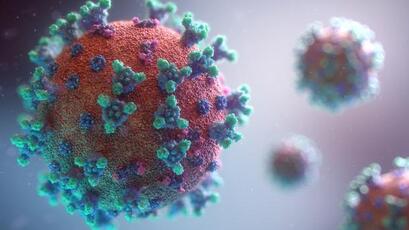Congratulations, Sri Lankan people and your leaders for their visionary actions which have been successful in keeping the death toll down to 36. Please continue to do this. Follow the science and not religious demands which are for whatever those who pass away are going to face in an after life. The concern should be for those who are alive. Please be guided by Science, not religious belief. The government’ s responsibility is to the living-not the dead, sad though it may be that their lives have ended. Even they would not wish their remains to cause problems to the living. by henry
Courtesy The Srilankan ScientistWHO RECOMMENDATIONS SUIT TEMPERATE COUNTRIES ,NOT TROPICAL HIGH RAIN HIGH TEMPERATURE COUNTRIES The Sri Lankan Scientist-
by Meththika Vithanage – –
Prof. Meththika Vithanage (Ph.D. in Hydrogeology; Prof. in Natural Resources) Director, Ecosphere Resilience Research Centre,
Faculty of Applied Sciences, University of Sri layewardenepura meththika@sjp.ac.lk
With more than two third of the world is under lock down due to Covid-19, many countries are facing problems that they have never encountered before. Those problems range from quarantine issues to last rights of the people die from this infection. In a viral pandemic like COVID-19, the concern is that the dead bodies of victims can spread the virus among the people who closely handle or work with them. At the same time there is a huge debate on whether burying the bodies of COVID-19 victims may facilitate the viral spread through the ground water table. In this article we try to look back at scientific literature and review the risk of ground water contamination through the burial of viral disease victims’ dead bodies.
It has been a well-known fact that the cemeteries are among the chief anthropogenic sources of pollution and contamination of groundwater in urban areas and beyond, in the area of hydrogeology. In the process of decomposition of a human body, 0.4-0.6 liters of leachate is produced per 1 kg of body weight, which may contain pathogenic bacteria and viruses that may contaminate the groundwater. Burial in any means causes soil contamination and then leads to groundwater pollution via the discharge of inorganic nutrients, nitrate, phosphate, ammonia, chlorides etc. and various microorganisms. High biochemical and chemical oxygen demands, ammonia, and organic carbon have been reported as high as several hundreds of mg in L from cemeteries and mass burial sites.
In the case of viruses, recent studies indicate that viral may transport in soil with rainfall infiltration and extends specifically to drinking water from an untreated groundwater source. Several scientific publications report virus occurrence rates of about 30 percent of groundwater. Virus transport in groundwater is associated with a high degree of temporal and spatial variability, which is often attributed to absorption, filtration, soil water content, temperature, pH, type of virus, and hydraulic stresses and climatic conditions. It has been observed that viruses in groundwater can be correlated with their concentrations in wastewater and with groundwater recharge events. The ex-filtration from sewers and cemeteries are the most likely source of human viruses to this groundwater system, and leakage from sewers during heavy precipitation enhanced virus transport.
The transport is often associated with both the unsaturated and saturated subsurface composed of varying geological settings with corresponding hydro-geological variability. Included among the essential hydro-geological factors that can be used to evaluate viral transport are the flux of moisture in the unsaturated zone, the media through which the particles travel, porosity, the length of the flow path, and the time of travel. In Sri Lanka, we experience high rainfall, low groundwater table, highly porous subsurface soil, and fractured rocks compared to most temperate countries in the world, which may lead the transport of biological and chemical compounds from dead bodies. Although WHO recommendation guidelines suit temperate countries mainly, not tropical high-temperature high rainfall countries where we experience high decomposition rates and highly variable water table.
This is where the local hydro-geological knowledge is essential to protect groundwater as well as forthcoming infection occurrence. Given the vulnerability of our groundwater aquifers, and lack of understanding about the behavior of COVID-19 virus, there can be a risk from dead bodies, septic waste or sanitary waste are having any contact with water sources. Hence, it is advisable to have careful measures in destroying the infected dead bodies, septic, and sanitary waste in proper conditions without provisioning chances for any future disease outbreak.

